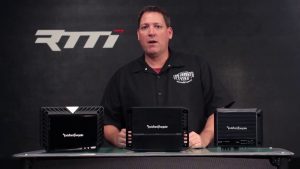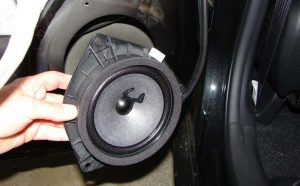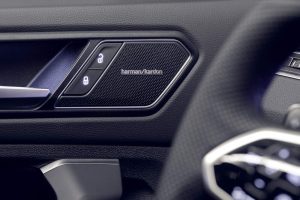Car stereo systems have evolved significantly over the years, offering audiophiles an immersive driving experience. As a car audio enthusiast, I’ve always sought to understand the nuances of my vehicle’s sound system. One particular feature that caught my attention and significantly enhanced my audio journey is the subsonic filter on the amplifier. What does subsonic do on an amp? In this article, we will delve into the world of subsonic filters, exploring their purpose, impact on bass performance, and how to optimize them for an unparalleled car audio experience.
Contents
- Understanding Subsonic Filters
- Impact on Bass Performance
- Setting Up Subsonic Filters
- Compatibility and Integration
- Common Misconceptions
- Tips and Tricks for Subsonic Filter Optimization
- Adjusting Subsonic Filters for Different Music Genres
- Personalization: Tailoring Subsonic Filters to Your Preferences
- Conclusion
Understanding Subsonic Filters
Definition and Purpose
Subsonic filters, commonly found in car audio amplifiers, are designed to manage low-frequency signals, specifically those below the audible range of human hearing. These filters act as a gatekeeper, allowing only desired frequencies to reach the speakers. By eliminating subsonic frequencies, subsonic filters enhance audio quality and protect the speakers from potential damage caused by extremely low-frequency vibrations.
How Subsonic Filters Enhance Audio Quality
The science behind subsonic filters lies in their ability to eliminate unwanted, non-musical frequencies that can compromise the overall audio experience. Subsonic frequencies, often felt as vibrations rather than heard as sound, can distort the reproduction of music and lead to inefficiencies in speaker performance. By removing these unnecessary frequencies, subsonic filters contribute to a cleaner and more accurate representation of the intended audio.
The Science Behind Subsonic Filters
To understand the impact of subsonic filters, it’s crucial to grasp the science behind low-frequency sound waves. Subsonic frequencies, typically below 20 Hz, are felt more than heard and can cause excessive cone movement in speakers. This movement, known as “overexcursion,” can result in distortion and even damage to the speaker components. Subsonic filters act as a safeguard against these issues by preventing the transmission of frequencies that could harm the speakers.
Impact on Bass Performance
Managing Low-Frequency Signals
Car audio enthusiasts often crave deep and powerful bass, and subwoofers play a pivotal role in delivering this experience. However, uncontrolled low-frequency signals can lead to distortion and affect the overall clarity of the audio. Subsonic filters step in to manage these low frequencies, ensuring that only the cleanest and most audible bass tones reach the speakers.
Preventing Speaker Damage
Overexcursion, caused by the unbridled movement of speaker cones in response to subsonic frequencies, poses a real threat to the longevity of speakers. Subsonic filters act as a preventive measure, cutting off frequencies that could push the speakers beyond their safe operating range. This not only preserves the integrity of the speakers but also extends their lifespan, ultimately protecting your investment in a high-quality car audio system.
Personal Experience: Navigating Bass Distortion Issues
Early in my car audio journey, I encountered issues with bass distortion that marred the enjoyment of my favorite tracks. Upon researching and discovering the role of subsonic filters, I realized that these filters could be the solution to my problem. After implementing and fine-tuning the subsonic settings on my amplifier, the improvement in bass clarity was immediate and transformative. It was a revelation that showcased the significance of subsonic filters in achieving optimal bass performance.
Setting Up Subsonic Filters
Location and Access in Car Amplifiers
Subsonic filters are typically integrated into car audio amplifiers, and accessing them may vary depending on the amplifier model. Commonly, these filters are adjustable through dedicated controls on the amplifier itself or via a remote control. Refer to your amplifier’s user manual to locate and understand the adjustments available for subsonic filters.
Adjusting Subsonic Filters for Optimal Performance
Once you’ve identified the subsonic filter controls, it’s time to fine-tune them for your specific car audio setup. Begin by setting the filter frequency to a level just below the lowest frequency response of your speakers. This ensures that only frequencies your speakers can handle are allowed through. Experiment with different settings and pay attention to how they impact the overall sound quality, making adjustments until you achieve the desired balance between powerful bass and clarity.
How to Adjust Car Stereo for Best Sound?
Fine-tuning for Personal Preferences
One of the remarkable aspects of subsonic filters is their ability to be tailored to individual preferences. Whether you prefer a tight and controlled bass or a more pronounced and resonant low end, subsonic filters can be adjusted accordingly. Consider the genre of music you listen to most frequently, as different musical styles may benefit from distinct subsonic settings. Don’t hesitate to experiment and trust your ears to guide you to the perfect configuration for your unique listening experience.
Compatibility and Integration
Subsonic Filters in Various Car Audio Systems
The versatility of subsonic filters makes them compatible with a wide range of car audio systems. Whether you have a factory-installed stereo or a high-end aftermarket setup, the integration of subsonic filters can elevate your audio experience. Ensure that your amplifier supports subsonic filtering and explore the available options to make the most of this feature in your specific car audio environment.
Pairing Subsonic Filters with Subwoofers
For enthusiasts who have invested in subwoofers to enhance their bass output, integrating subsonic filters is particularly crucial. Subwoofers are designed to handle low frequencies, and subsonic filters help fine-tune the signal they receive. By ensuring that only relevant frequencies are delivered to the subwoofers, you can optimize their performance and achieve a seamless blend between the subwoofers and the rest of the audio system.
Ensuring Harmonious Integration
Achieving a harmonious integration of subsonic filters requires a holistic approach to your car audio system. Consider factors such as the size and type of speakers, the power output of the amplifier, and the acoustics of your vehicle’s interior. By understanding how each component interacts with the subsonic filters, you can create a well-balanced and immersive audio environment.
Common Misconceptions
Debunking Myths Surrounding Subsonic Filters
Despite their clear benefits, subsonic filters may be surrounded by misconceptions. One common myth is that these filters negatively impact overall bass output. In reality, subsonic filters enhance bass performance by preventing distortion and protecting speakers. By debunking such myths, car audio enthusiasts can fully embrace the advantages of subsonic filters without hesitation.
Addressing Concerns About Audio Quality
Some users express concerns about the impact of subsonic filters on the overall audio quality. It’s essential to understand that when properly configured, subsonic filters enhance audio clarity by eliminating unwanted frequencies. By addressing these concerns and highlighting the positive impact on sound reproduction, users can confidently integrate subsonic filters into their car audio setups.
Real-world Benefits: A Personal Testimonial
Reflecting on my own journey, the incorporation of subsonic filters has been a game-changer. Not only did it resolve bass distortion issues, but it also introduced a level of precision and clarity to my car audio experience that I hadn’t thought possible. Subsonic filters are not just a technical feature; they are a practical solution that enhances the joy of listening to music on the road.
Tips and Tricks for Subsonic Filter Optimization
Expert Tips for Getting the Best Results
To maximize the benefits of subsonic filters, consider the following expert tips:
- Consult your amplifier’s user manual for specific guidance on subsonic filter adjustments.
- Use frequency sweep tracks to identify the optimal settings for your speakers and subwoofers.
- Regularly check and adjust subsonic filter settings to accommodate different music genres and preferences.
Adjusting Subsonic Filters for Different Music Genres
Different music genres have varying bass characteristics, and subsonic filters can be adjusted to complement each style. For example:
- Tighten the subsonic filter for genres with fast and punchy bass, such as electronic or hip-hop.
- Loosen the filter for genres with extended and deep bass, like classical or certain rock genres.
Personalization: Tailoring Subsonic Filters to Your Preferences
Ultimately, the ideal subsonic filter settings are subjective and depend on individual preferences. Trust your ears and make adjustments based on the type of music you enjoy and how you want it to sound. Experimentation is key, and the process of fine-tuning subsonic filters can be as enjoyable as the end result.
Conclusion
In conclusion, understanding what subsonic does on an amp for a car stereo is essential for anyone seeking to optimize their audio experience. Subsonic filters play a crucial role in managing low-frequency signals, preventing distortion, and safeguarding speakers. By embracing and fine-tuning this feature, car audio enthusiasts can elevate their driving experience to new sonic heights. Remember to explore, experiment, and trust your ears as you embark on the journey of unlocking the full potential of subsonic filters in your car stereo system.






